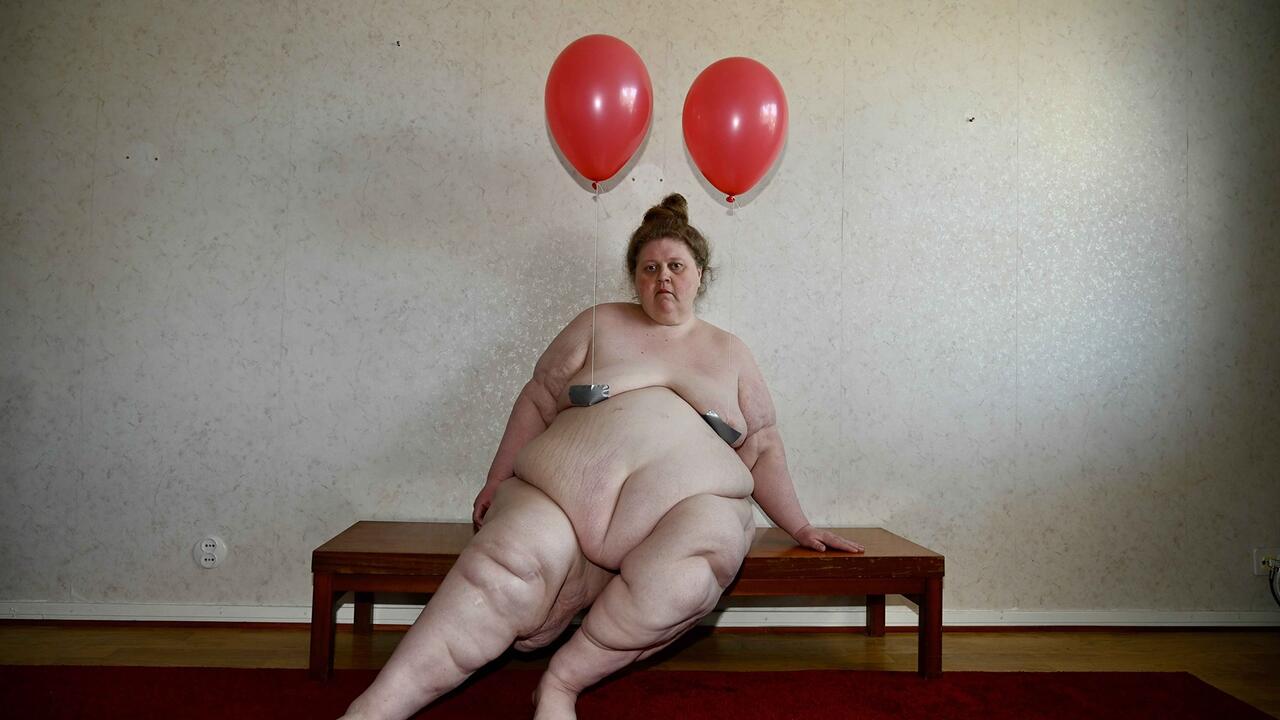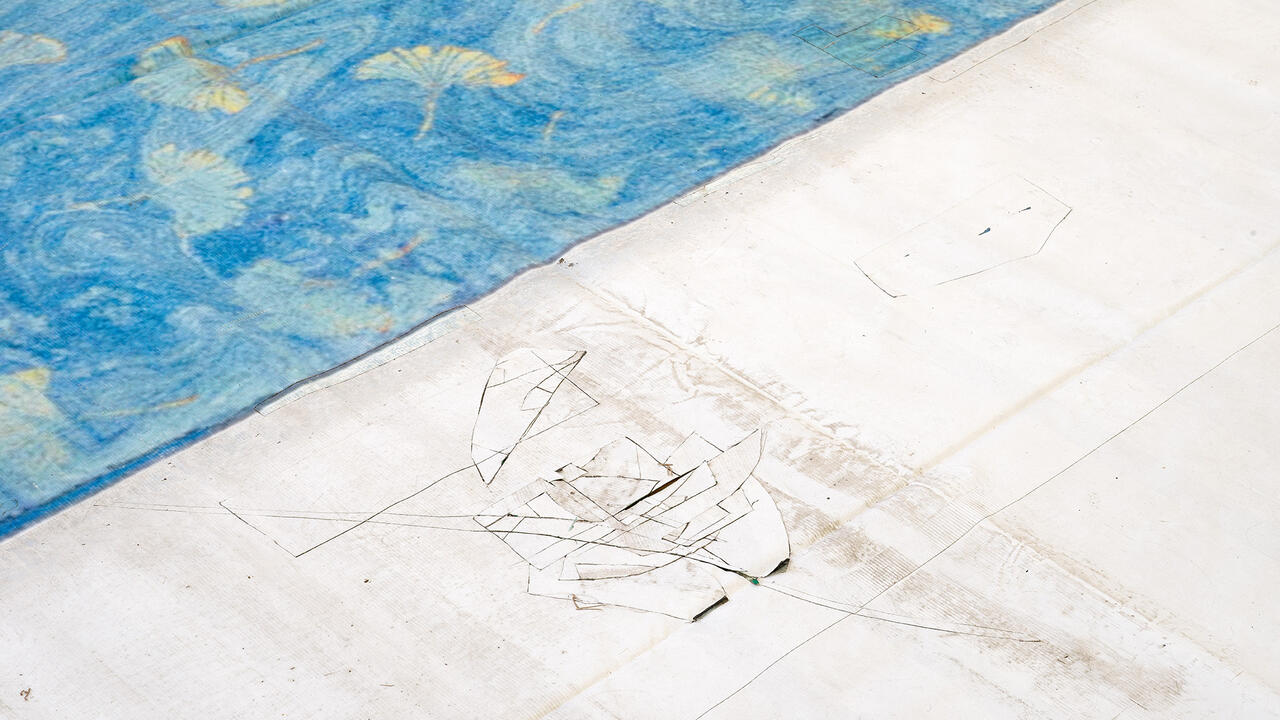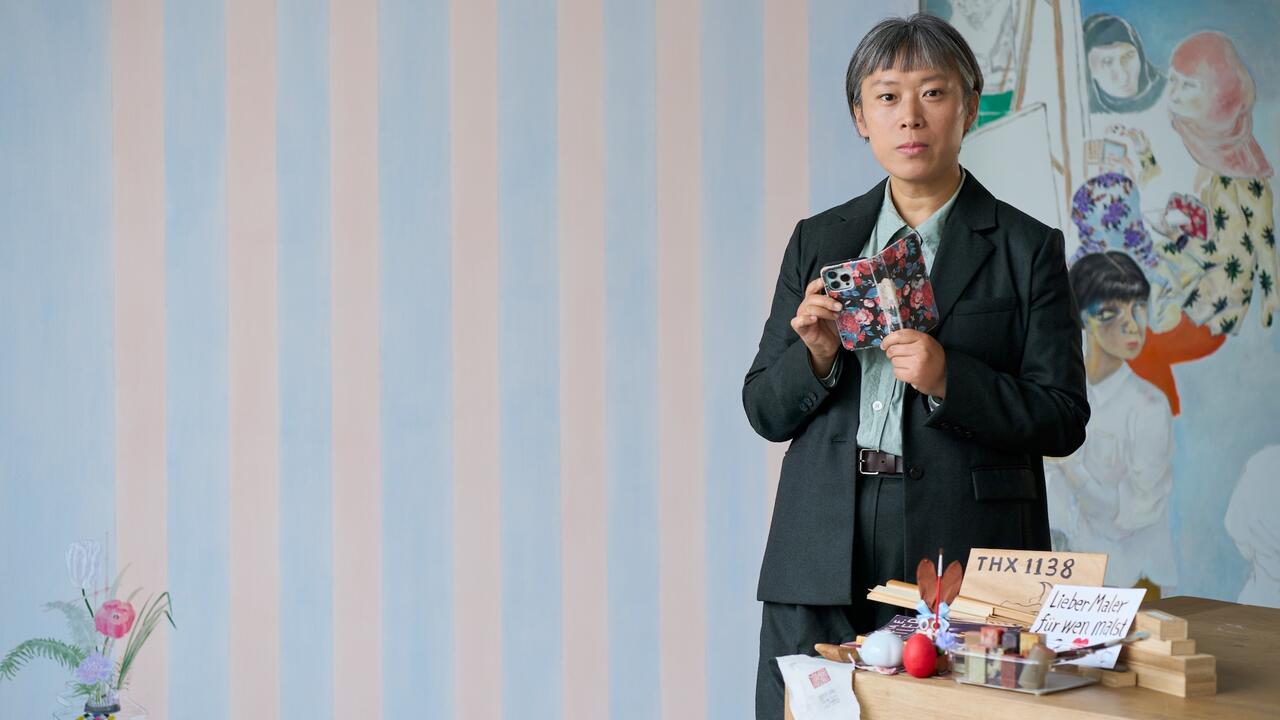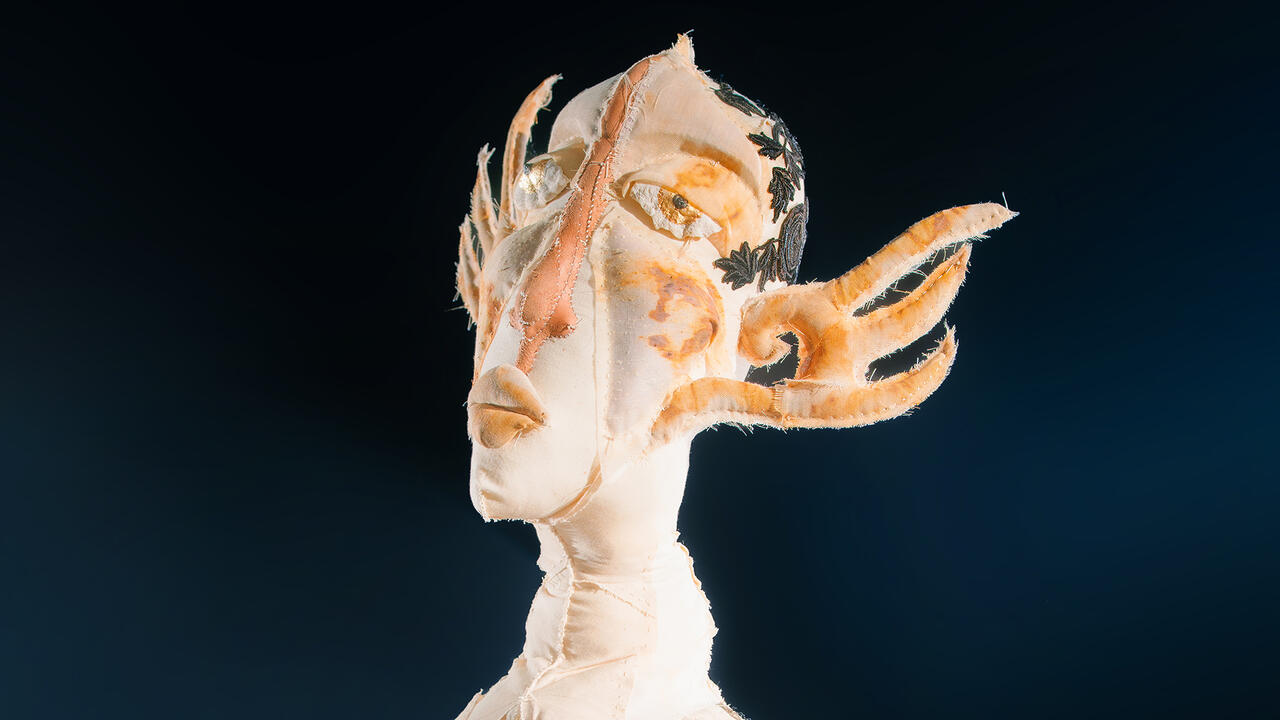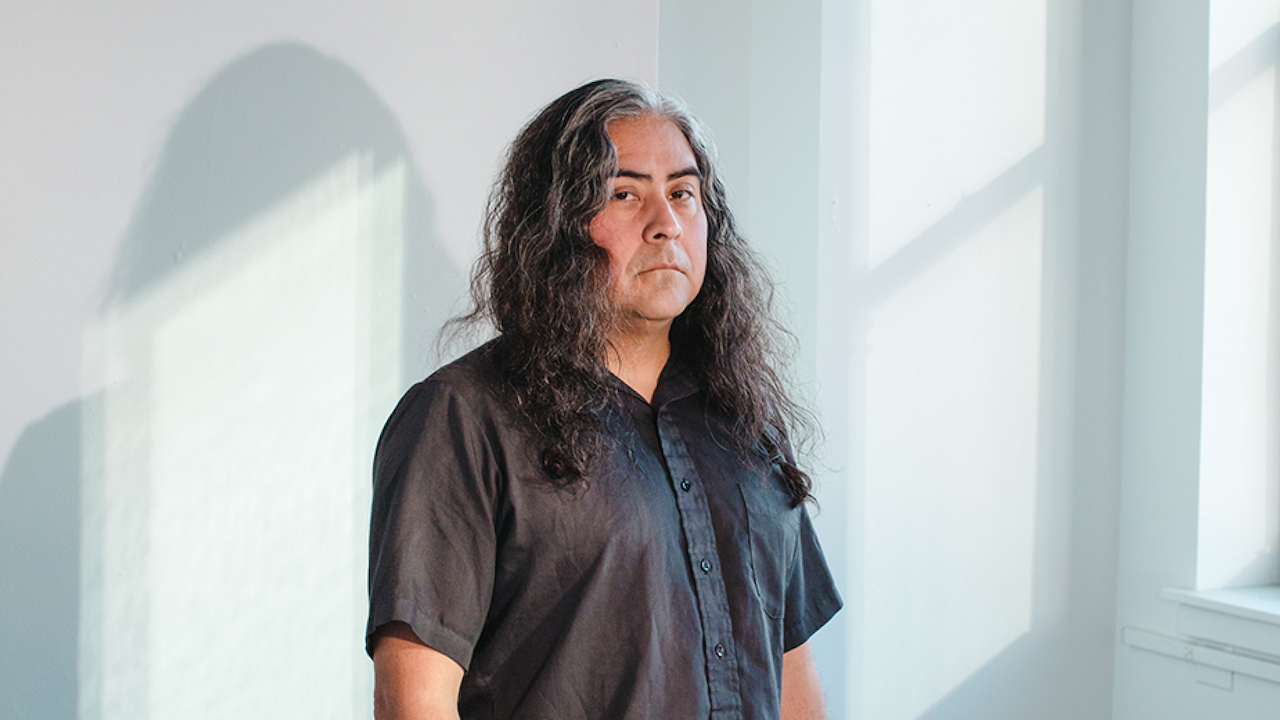Edward Krasinski
1925–2004
1925–2004

According to Pliny the Elder, the painter Apelles paid a visit, c. 300 BC, to his friend Protogenes and, not finding him at home, painted a narrow line on a wooden board that the artist had left in his studio, primed for a new painting. On his return, Protogenes responded by drawing a thinner line, in a different colour, over the one Apelles had drawn. When Apelles popped by again and saw his line now split down the middle by the one Protogenes had drawn, he painted an even finer line in a different colour, again down the middle of Protogenes' line. This painting of three lines on board (and we can only guess if they were horizontal or vertical, and if the colours were blue, black and white) went straight to a collector's house and then to Caesar's palace on the Palatine Hill, where it was destroyed by fire around 4 AD.
The result of Apelles' visit was to unite three extraordinary lines in an abstract painting of sublime quality. Some twenty centuries later, days do not seem so rich in lines anymore. In his essay 'The Writer's Technique in Thirteen Theses' (1928), Walter Benjamin added a bitter rejoinder to the industrious motto attributed to Apelles: 'Nulla dies sine linea ['Not a day without a line'] - but there may well be weeks.'1 The essay ends with a laconic definition: 'The work is the death mask of its conception.'2
The artist Edward Krasinski, who among other things was also an author of aphorisms scribbled on tiny pieces of paper and then casually stuck on his living-room table, might have agreed with Benjamin's definition of an artwork, but probably not without twisting it into a contradictory one. He never allowed his works to become posthumous effigies of his own concepts; nor did he really accept other people's concepts as his own. Instead, he might have proposed that we should keep in mind another line from Benjamin, from his essay 'Thirteen Theses against Snobs' (1928): 'No document is as such a piece of art.'3 In an obituary published in a newspaper after Krasinski's death on 5 April this year he was simplistically described as the 'inventor of the famous blue tape', as if the author of the obituary sought to reject Benjamin's eighth anti-snob thesis: 'In the artwork, subject matter is a ballast jettisoned during contemplation.'4
Krasinski was born in 1925, into an aristocratic Polish family in the small town of Luck (in the province of Volhynia, now Ukraine). After the German invas-ion of Poland in 1939, the family fled to Kraków, where Krasinski enrolled in the German Staatliche Kunstgewerbeschule (State School of Arts and Crafts). His first works in the 1950s were erotic, surreal drawings for magazines. In the 1960s Krasinski moved to Warsaw, where he met the artists and art critics who established the Foksal Gallery in 1966 - among them Anka Ptaszkowska, who became an avid supporter and lifelong friend. Krasinski's work from the 1960s and '70s is neither quite Minimalist nor properly Conceptual. Suspended or linear sculptures are interrupted by the occasional use of colour and found objects: books and bottles are mixed with fragile common materials such as rubber, wire and string. Occasionally letters or sequences of numbers appear. But the work's apparent geometric precision is a mere illusion.
Krasinski used blue Scotch tape in his actions and installations, sculptures and photo-based works from 1968 onwards, when he taped it across his young daughter's belly, around some trees and across the walls of a pigsty near his manor-style rural home in the village of Zalesie, near Warsaw. Two years later in Paris he did the same thing to the gallery windows at Rive Gauche. The artist then applied the blue stripe to his 'axonometric drawings' and interventions in the 1970s and '80s, and he continued to use it in site-specific installations in museums, galleries, shops and various other private and public sites in the 1980s and '90s. These installations include models of architectural forms - labyrinths, cubes, pedestals, walls, floors and pillars - with black and white photographs that he commissioned from professional photographers or with reproductions of other artists' work, both historical and contemporary.
The slogan printed on the sticker on the 3M Scotch tape package could be a basic introduction to contemporary art - 'it repairs, decorates and identifies'. As the critical mass of text trying to grasp Krasinski's trademark gesture grew, the artist refused to explain its meaning in metaphysical terms, sticking instead to this somewhat matter-of-fact statement: 'Plastic tape Scotch blue, width 19 mm, length unknown. I stick it horizontally on everything and everywhere, at a height of 130 cm.' The tape became his hallmark, but Krasinski never fetishized it, and referred to it in his writings or interviews only in passing, usually as if it were a way of marking his territory. He stuck to the tape, as it were, without knowing exactly what the conceptual promise it offered was.
Krasinski once wrote, 'Art is too serious a thing to be made by artists' - a sentence almost too serious to have been uttered by him. Sceptical of any pretence to artistry, he produced many works in the 1980s and '90s in his flat on the top floor of a tower block in the centre of Warsaw. The flat had originally belonged to Polish avant-garde artist Henryk Stażewski, who had used it as a studio and once invited Krasinski to stay. Eventually Krasinski simply moved in. After Stażewski's death in 1988, Krasinski exhibited a life-size black and white photographic replica of the bookshelves and other parts of the flat at Foksal Gallery in Warsaw. When the show was over, he moved some of the works back to the flat and installed them next to the 'originals'. From then, his flat slowly began to turn into a mise en scène, where works of art, household objects and pictures mixed in ever-changing constellations. Too ill to continue working alone, Krasinski was forced to move out two years ago. Now, after his death, it remains a work of art cast adrift from the immediate past but already drenched in the swirl of an entropic present.
A mid-19th-century poem by Richard Dadd, entitled 'Elimination of a Picture and its Subject', takes us back in time to the story of the two painters as told by Pliny the Elder and into the future, via Walter Benjamin to Krasinski's blue line:
'Fay woodman holds aloft the axe
Whose double edge virtue now they tax
To do it singly & make single double
Featly & neatly - equal without trouble.'
1. Walter Benjamin, One-Way Street and Other Writings, trans. Edmund Jephcott and Kingsley Shorter, Verso, London, 1992, p. 65.
2. Ibid.
3. p.66.
4. Ibid.










